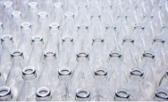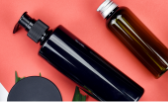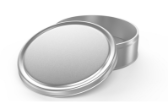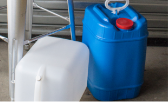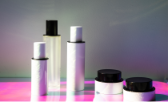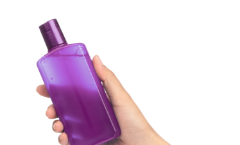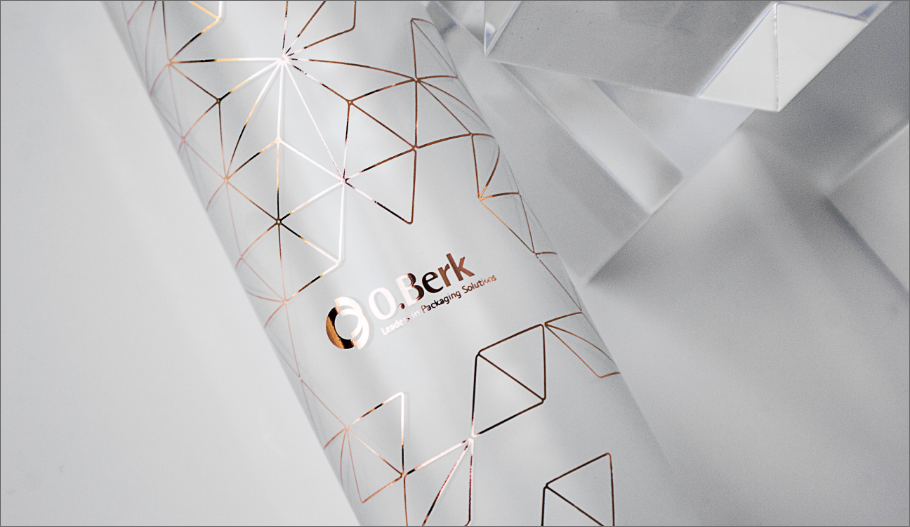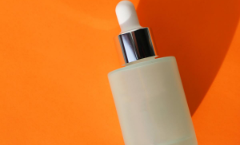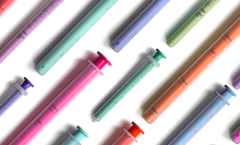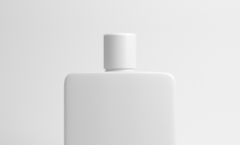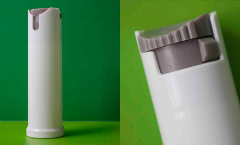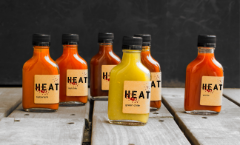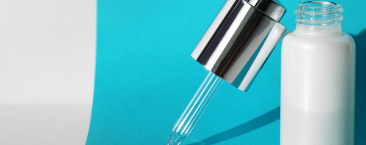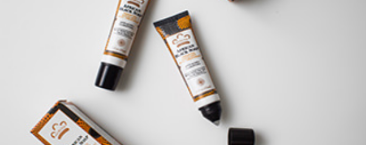This decorating technique involves printing on the container itself. Silk-and or a synthetic material is tightly stretched over a wood and or aluminum frame. The areas on the screen that should not print are blocked by an emulsion coating and ink is forced through the open mesh by a squeegee onto the bottle. The amount of ink applied in silk screen printing is far greater than in other printing methods.
A technique used in silk screening to add emphasis to the printed copy is reverse printing. This technique calls for a large body of ink to be laid down on the bottle and having the print or copy appear through the screened area using the bottle color to provide the print. In using the reverse print technique it is often possible to give the appearance of two color printing when, in fact, only one has been used. It's important that print copy is not too small when using reverse printing. The minimum element size is .010 inches.
When there is more than one color print, or if front and back label panels are required, multiple screening passes are made.
It's advisable to talk to your O. BERK representative before artwork is prepared. He or she may help attain the desired result the first time instead of having several revisions. There are standards that must be met in artwork to assure good quality printing. When multiple passes are required, particular care should be exercise caution in the preparation of the artwork layout to allow for the decorating tolerances required to trap multiple colors.
Silk screening is a good technique to utilize when a label copy is likely to be changed often. The cost of new screens is very modest and can be done quickly.
Multicolor Printing
You may print your graphics in any combination of the colors listed in a standard color chart or select a PMS color. However, the artist must pay extra attention to registration. This is caused by the varying shrinkages in the drying process which prevent the printer from holding hairline registration. Consequently, the artist must design sufficient clearance into the artwork to prevent overlapping of colors.
Round containers require a greater horizontal float than oval shapes. This is because oval bottles can be held in holders that always return to the same starting position after the printing stroke. When preparing multi-color art for printing oval containers, always allow for a minimum 1/32 inch horizontal or vertical float for each pass.
Pictured here are circle to circle, point to point, and edge to edge examples typical of those close registration designs that should be avoided in multicolor screen printing.
Experience in printing large diameter containers, such as one half and one gallon units, indicates a need for tolerance in registration - vertically +/- 1/16 inch and horizontally +/- 1/16 inch.
Wider tolerance is also necessary where the manufacturer has not provided a registration lug or recession in the container. In the absence of a registration lug, the art will require eye registration and subject to1/16" float tolerance up, down, left and right.
Type Selection
The selection of type faces which print satisfactorily is important. In screen decorating, it is difficult to hold the viscosity of the ink constant. Therefore, type faces should be selected that will not change character when the ink is running slightly heavier or lighter. Type that is too small will allow ink to dry in the screen, causing broken characters and possible illegible text. Here's a good rule of thumb on size: Make sure there's no element in a label that's smaller than .005 inch.
Label Dimensions
Allow a minimum of ½ inch from point of curvature at bottom and shoulder of bottle for holding container in printing process. On round bottles, allow a minimum of 3/8" inch parting space between edges of label to eliminate overrun smearing.
Split Screen Printing
A majority of single pass printing is done with one color. However, it is possible to split the silk screen horizontally and print two or more colors in one pass. When preparing split screen art, always allow at least 1/2 inch between colors and run a horizontal line 1/16 inch wide through the center of the break. This will aid the screenmaker in adhering the divider.









